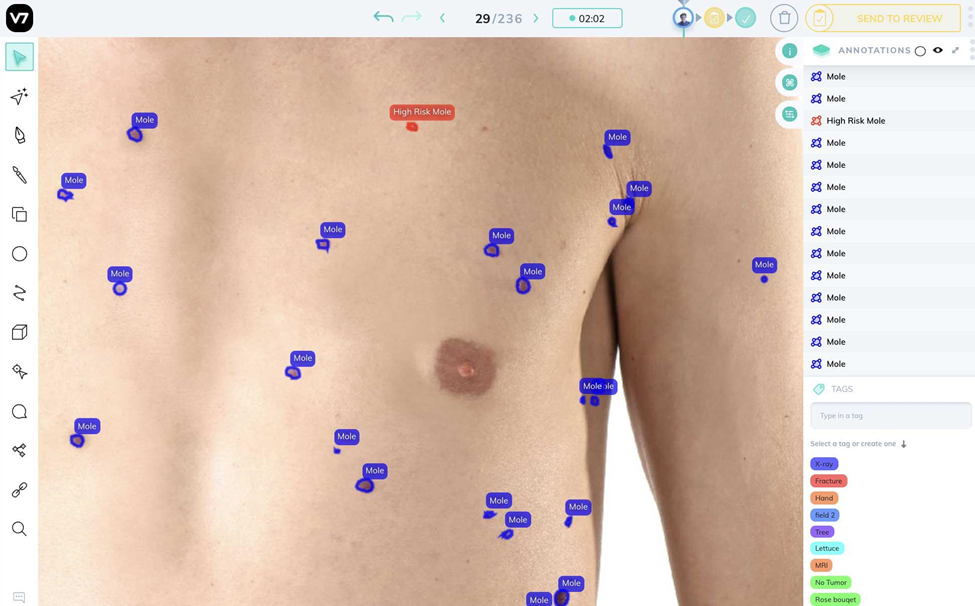Dermatology is a medical field that heavily relies on visual data. In fact, skin cancer is one of the most common cancer types, with approximately 9.500 people in the U.S.diagnosed with it every day.
The use of computer vision in dermatology could be literally life-saving. Melanoma, which is one of the deadliest forms of skin cancer, has a survival rate as low as 16% if the disease progresses to the lymphatic system or beyond.
Early detection and proper treatment can produce a survival rate of 87 percent. And that’s where computer vision comes into play. Medical teams all over the world are now collecting and labeling patient data, and training robust AI models they can rely on when diagnosing their patients.
Here’s an example of an image annotated on V7 distinguishing between high-risk and regular moles on a patient’s body.

For example, in one of the studies, the researchers decided to compare the performance of Convolutional Neural Networks (CNNs) in differentiating skin lesions using image analysis with the performance of human dermatologists.
There were 96 dermatologists participating in the study and one hundred cases of pigmented/non-pigmented skin cancers and benign lesions.
The result?
The CNN outperformed dermatologists in their level I management decisions as well as level I and II diagnostic decisions. CNNs also achieved nearly the same level of sensitivity as human raters. Such studies demonstrate the power of technology to support human doctors in performing all kinds of visual tasks to improve diagnostic accuracy and thus enhance patient outcomes.
But there’s more.
The iToBoS project is a 4-year long, multi-site research project that aims to build a new diagnostic tool for the early detection of melanoma. And the project is leveraging computer vision in dermatological diagnosis. iToBoS brings together a total of 19 leading scientific institutions and companies from 13 countries. The total budget of the project is 12 million euros.
Some of the more specific goals of the project include:
- Integrating data sources and clinicians’ knowledge for accurate diagnosis through an AI cognitive assistant
- Achieving a highly personalized diagnosis of melanoma and offering clinicians understandable AI support
- Acquiring a comprehensive and representative dataset of skin lesions with ground truth
In conclusion
Computer vision has tremendous potential in dermatology. It can help with the early detection of skin cancer, offer support to human doctors, and improve patient outcomes. Moreover, it can be used to build new diagnostic tools for the early detection of e.g., melanoma, as well as achieve a more personalized diagnosis of the disease.
